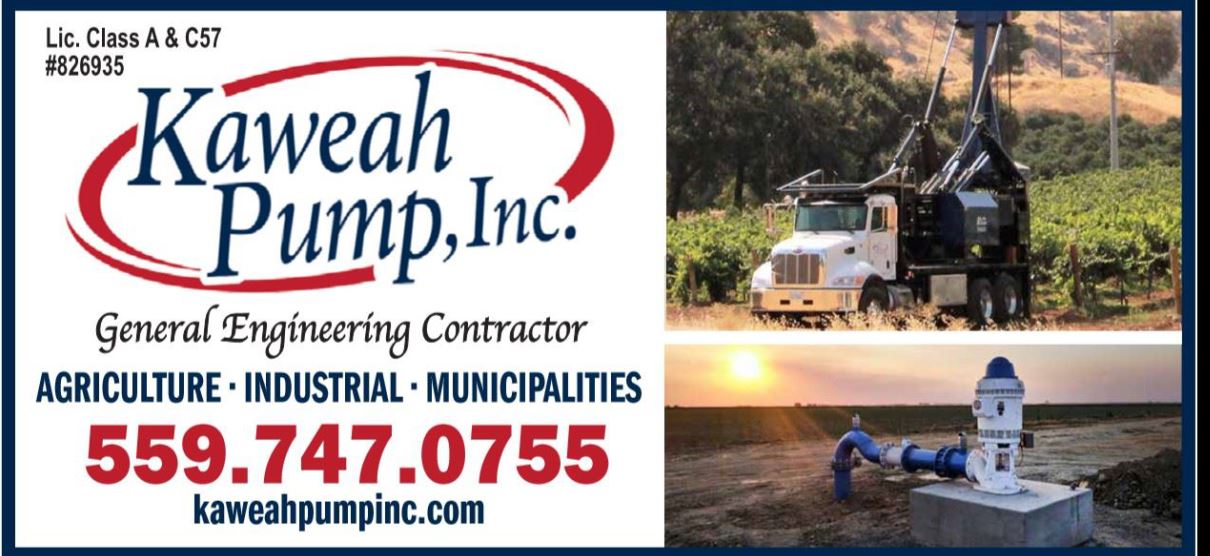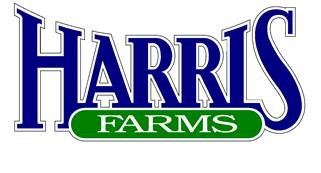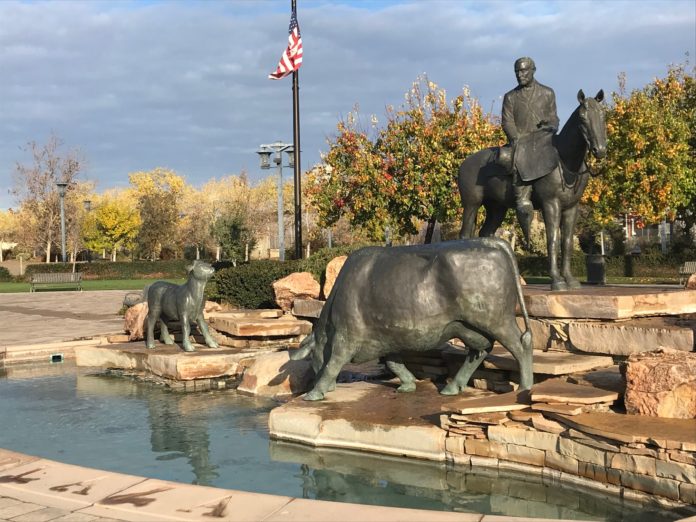 The San Luis Delta Mendota Water Authority held its Thursday, August 8, 2019 board meeting at its Los Banos headquarters. I arrived early enough to enjoy sitting through the finance committee; there’s not enough coffee in the world to provide an interesting narrative. Instead let’s talk about global warming. I was in Bakersfield earlier this week and the thermometer/compass on my rearview mirror* indicated it was 108 degrees. I had some spare time between meetings and I didn’t want to go to Starbucks and hangout with the homeless since my next meeting was going to be at a Starbucks anyway. So, I opted to idle away my time at the Southwest branch of the Kern County Library on Ming Avenue, not far from the Starbucks and later the Kern Water Bank meeting. The facilities were nice but I wondered about the shopping carts filled with the detritus of the urban camper nomad. I’m not trying to make fun of homeless people, (I had a brief unemployed spell in my younger days that necessitated sleeping in my car) I’m trying to paint a picture of who I was dealing with. It was hot and God bless them the library had AC. Anyway, I’d had a big chile verde burrito for lunch and it wasn’t long before I got sleepy. There were some good, stuffed chairs in the reading room so I went there to doze. I chose a chair that faced the back of a man wearing a dusty parka who had a trash bag full of other wardrobe items from his ensemble. When I sat down behind him he immediately moved around his table to face me and put the bag of clothes between our line of sight. I fell asleep for a cat nap. When I got up to leave the old boy got pretty agitated as I walked by. He jumped up from his seat, called me a slang name for a homosexual and ran around to the other side of the table. Two things; One – it hurt my pride that my orientation was even questionable given my self-perceived viral masculinity and two – This guy’s crazy and I’m blaming it on climate change. Also the entire incident makes me question who the true disadvantaged community is.
The San Luis Delta Mendota Water Authority held its Thursday, August 8, 2019 board meeting at its Los Banos headquarters. I arrived early enough to enjoy sitting through the finance committee; there’s not enough coffee in the world to provide an interesting narrative. Instead let’s talk about global warming. I was in Bakersfield earlier this week and the thermometer/compass on my rearview mirror* indicated it was 108 degrees. I had some spare time between meetings and I didn’t want to go to Starbucks and hangout with the homeless since my next meeting was going to be at a Starbucks anyway. So, I opted to idle away my time at the Southwest branch of the Kern County Library on Ming Avenue, not far from the Starbucks and later the Kern Water Bank meeting. The facilities were nice but I wondered about the shopping carts filled with the detritus of the urban camper nomad. I’m not trying to make fun of homeless people, (I had a brief unemployed spell in my younger days that necessitated sleeping in my car) I’m trying to paint a picture of who I was dealing with. It was hot and God bless them the library had AC. Anyway, I’d had a big chile verde burrito for lunch and it wasn’t long before I got sleepy. There were some good, stuffed chairs in the reading room so I went there to doze. I chose a chair that faced the back of a man wearing a dusty parka who had a trash bag full of other wardrobe items from his ensemble. When I sat down behind him he immediately moved around his table to face me and put the bag of clothes between our line of sight. I fell asleep for a cat nap. When I got up to leave the old boy got pretty agitated as I walked by. He jumped up from his seat, called me a slang name for a homosexual and ran around to the other side of the table. Two things; One – it hurt my pride that my orientation was even questionable given my self-perceived viral masculinity and two – This guy’s crazy and I’m blaming it on climate change. Also the entire incident makes me question who the true disadvantaged community is.
The regular board meeting was kicked off at 9:30am by Chairman Cannon Michael. This was one of the least attended meeting I’ve seen in years of coming here. We saluted the flag and introduced ourselves. There were new nameplates for the directors and they all passed the test by facing their names away from themselves. I’ve been to meetings where all the nameplates were facing the directors as if they couldn’t recall something. I won’t point it out. Under public comment Director Jim McLoed pointed out Michael was nationally recognized for his cotton growing prowess in Farm Press I believe. 
The consent calendar was approved and SLDMWA Executive Director Federico Barajas spoke about the efforts to further the Temperance Flat Dam project. The organizational portion of this process has had many twists and turns. A new JPA is planned and the board agreed to have Michael and Barajas on the board. Attorney Becca Ackroyd explained the scope and function of the latest JPA. There were some questions about the overlap between the Temp Flat efforts and the Valley Blueprint being championed by the Friant Water Authority. Garth Hall of Santa Clara Valley Water District asked about that and Westlands WD Executive Officer Tom Birmingham said the Valley Blueprint goes much further than just the dam. There was also a question about cities and counties being JPA members. Ackroyd said there is room for them to join. Westlands Director William Bourdeau said he wants to see the City of Coalinga join. The last big earthquake to hit that city caused folks to live in FEMA camps due to loss of water. I believe he would consider it a prudent move for that community.
Next science consultant and Program Manager Bruce DiGennaro spoke about the Collaborative Science Adaptive Management Program/Collaborative Adaptive Management Team. CSAMP was formed in 2013 as a response to the biological opinion lawsuits involving the San Joaquin River and Delta matters. DiGennaro said this is a completely voluntary group. He said CSAMP is a forum for open dialog for state, federal and NGOs regarding the biops. Bourdeau thanked DiGennaro for his efforts to go beyond limiting water exports as a remedy for Delta problems and asked if there was a communications facet to these efforts. It was agreed the public’s knowledge on these vital matters is somewhat limited. DiGennaro said there isn’t any outreach component at this time.
DiGennaro said there is a “no regret” category for issues everyone agrees on. Further studies and reviews of scientific studies regarding salmon and smelt populations play a big part in the annual $4 million expenditures. The US Bureau of Reclamation, California’s Department of Water Resources and water entities such as SLDM, as well as some NGOs fund CSAMP. Birmingham asked about Frances Brewster’s of SCVWD contributions. DiGennaro said Brewster is been very helpful and hardworking, serving as Chairman of CAMT. DiGennaro said she’s the one who gets the behinds the scenes work completed. Birmingham said CSAMP’s science findings have been important in identifying better management decisions to recovery species and pay real dividends. DiGennaro said one of CSAMP’s accomplishments is the ability to present an expanded palate of options and the cost/benefit estimates associated to those options. One option mentioned was reviving strategic dredging in the South Delta to help water flow for better utility and quality. Director Gary Kremen asked about using the findings in court proceedings and regulatory decisions. DiGennaro said yes, the information is starting to get integrated in those processes. Hall thanked Birmingham and DiGennaro for recognizing Brewster’s contribution and pointed out when extra staff time is figured in the actual value of manhours would be three times the CSAMP budget. Ric Ortega, Grasslands WD offered to help quantitate those hours. Good for him. Bourdeau warned there could be a mischaracterizing of these efforts as anti-enviro and that is a good point. Science has unfortunately become politized – SB 1 is a ready example. The irony is new science discoveries that help fish and the Delta’s health also show ways to help farmers receive water contract fulfillment. In some minds this is tantamount to saying something positive about the Trump administration. For instance; some of the information points to reduced fall X2 lines to the tune of an additional 10,000 a/f per day of water supplies for two months.
SLDM’s J. Scott Petersen gave the legislation report saying the SLDM staff will be visiting Washington DC in the near future to help with water issues. Congressman Jared Huffman, former NRDC is working on a water bill. Watch out. On the state side SB 1 is fully in the crosshairs of Governor Gavin Newsom, who has expressed the need for amendments which would change a good deal of the concerns now facing water. Next Petersen said the biological re-consultations are moving ahead but without incidental take guides. That could leave a greater or lesser deal of liability on the table and involve the legal terms “jeopardy and non-jeopardy opinions.” Petersen said the Voluntary Agreements are moving forward with work on defining the biological goals that in turn will influence the measured implemented. The next big date is October when the State Board will determine if the VAs are legal. He also said the SJ Valley Blueprint is growing and efforts to get this entered into Newson’s water plan are looking good.
Barajas reported on an agreement for contributing funds to the USBR on San Luis expansion. Getting a preconstruction project management plan and schedule is the goal for spending, I think he said, $25,000 and an offramp will be included in this. This money, by the way, is for the raising of San Luis Dam above the seismic safety raise. Hall asked if the state has bought into this effort yet and Barajas said this will be brought up in due time. He was a little more specific than my writing indicates.
Tom Boardman, Westlands gave his water report saying the state had to decrease its pumping until mid-August for some reason I didn’t understand. Friant flood flows resulted in an additional 165,000 a/f for the west side and was helpful at San Luis. Shasta snowpack is still very good and salmon runs are looking better. Not much to report at Folsom Dam but supplies there are good and helping with Delta flows. Boardman said the Fall X2 line could be modified but the state isn’t buying in. The feds may operate with the reduced X2 standard and the state may not be able to do so. Also, the state wouldn’t be allowed to wheel any federal water down the Aqueduct if the feds don’t comply. Even in dry conditions there are reasons to hope for the federal side of SLR being filled by March this next spring.
Barajas gave his report saying there is a new board member orientation packet with additional information. There will be a workshop this afternoon by the Bureau on how the CVP San Luis division uses power and the problems taking place. Lunch provided and I’m tempted. Barajas said there are two steps being taken on the strategic plan; one he’s meeting with  member managers next week to come up with how to implement; two will deal with governance. A good deal of this relates to the board and this is being looked at by an ad hoc committee. There’s also an ad hoc on finances. The Friant board wants to tour facilities on August 29th including the pumps and the tie in facility. SLDM has awarded a contract to rewind one of the pumps at Jones. It’s out of pocket and staff is trying to get money from the Bureau for the following pump rewind. That has to happen to get the needed funding.
member managers next week to come up with how to implement; two will deal with governance. A good deal of this relates to the board and this is being looked at by an ad hoc committee. There’s also an ad hoc on finances. The Friant board wants to tour facilities on August 29th including the pumps and the tie in facility. SLDM has awarded a contract to rewind one of the pumps at Jones. It’s out of pocket and staff is trying to get money from the Bureau for the following pump rewind. That has to happen to get the needed funding.
Committee reports were next and they are always iffy. However, Birmingham reported his water resource committee  met and discussed the Temp Flat JPA and CSAMP. He asked SLDM’s Frances Mizuno to talk. She said there are talks about dredging portions of the southern part of the Delta. How to get the necessary permits and fund to clean up the silting in the channels is the next step. Mizuno also reported staff is already working on next year’s budgets.
met and discussed the Temp Flat JPA and CSAMP. He asked SLDM’s Frances Mizuno to talk. She said there are talks about dredging portions of the southern part of the Delta. How to get the necessary permits and fund to clean up the silting in the channels is the next step. Mizuno also reported staff is already working on next year’s budgets.
Next Mike Wade with the Farm Water Coalition reported a new mission statement is on its way. FWC does outreach work for SLDM. It’s also working on subsidence related materials with the Exchange Contractors. The FWC board has directed a continuation of the highway sign campaign. You’ve seen some of them if you drive around the Valley.
Petersen said ACWA committee nominations are open until September 30th. The deadline for the Governor’s Water Resiliency program submissions is the end of this month.
Mizuno reported on 2020/2021 water transfers saying the final administrative draft is under review with some delay by the Bureau. The meeting then went into closed session.
DISCLAIMER OF RESPONSIBILITY; Waterwrights strives to provide his clients with the most complete, up-to-date, and accurate information available. Nevertheless, Waterwrights does not serve as a guarantor of the accuracy or completeness of the information provided, and specifically disclaims any and all responsibility for information that is not accurate, up-to-date, or complete. Waterwrights’ clients therefore rely on the accuracy, completeness and timeliness of information from DAW entirely at their own risk. The opinions expressed in this report are those of the author and do not represent any advertisers or third parties. *The National Weather Service often calls me up to check its calibrations against my 2004 Saturn.
ALL RIGHTS RESERVED. Copyright 2019 by Don A. Wright 
SAN LUIS & DELTA-MENDOTA WATER AUTHORITY was established in January of 1992 and consists of approximately 2,100,000 acres of 29 federal and exchange water service contractors within the western San Joaquin Valley, San Benito and Santa Clara counties. The governing body of the Authority consists of a 19-member Board of Directors classified into five divisions with directors selected from within each division. The main conveyance is the Delta-Mendota Canal that delivers approximately 3,000,000-acre feet of water within the Authority service area. Of this amount, 2,500,000-acre feet are delivered to highly productive agricultural lands, 150,000 to 200,000-acre feet for municipal and industrial uses, and between 250,000 to 300,000 acre-feet are delivered to wildlife refuges for habitat enhancement and restoration. Chairman: Cannon Michael, Executive Director: Federico Barajas, Assistant Executive Director: Frances Mizuno, Attorney: Becca Ackroyd.
Email: youtellus@sldmwa.org 209/826-9696
P.O. Box 2157 Los Banos, CA. 93635
































